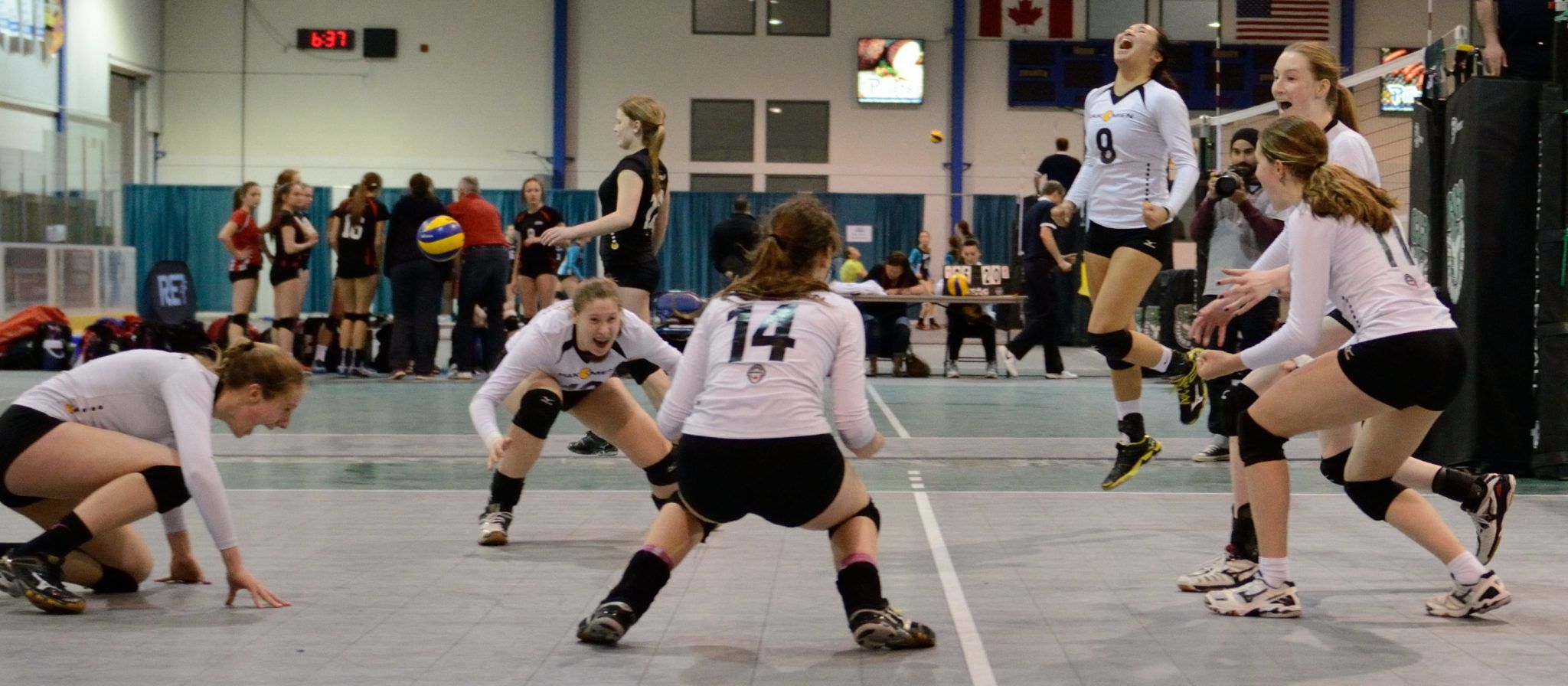Different Positions of Players in Indoor Volleyball and Their Roles on the Court

In the sport of indoor volleyball each team consists of six players. It is also important to know that each of team’s players occupies certain position on the court and has his/her roles in the court. Each part of the court is divided by the central line into two rows. So, there are front row and back row. There are six positions on the playing court: front-left (numbered as 4), front-center (numbered as 3), front-right (numbered as 2), back-left (numbered as 5), back-center (numbered as 6) and back-right (numbered as 1). Each position has its own number.
Three players play on the front row (so they are known as front-row players) and three players play on the back row (so they are known as back-row players). Front-row players occupy front-left, front-center and front-right positions of the court. Back-row players occupy back-left, back-center and back-right positions of the court.
Before the ball is hit by server players of both teams have to be positioned properly on the court. If one of team’s players occupies the wrong position on the court when the ball is hit by server that means that his/her team commits a positional fault. Special attention should be drawn to the fact that a positional fault results in certain sanctions for the team. As a result, the team committing a positional fault loses a point. Also, the right to serve the ball the next time is given to the opposing team. Players can change their positions after the ball is hit by server. So, they can occupy any position on their court side. When the team receives the right to serve the ball its players have to change their positions and rotate clockwise.
As it has already been said, each player in indoor volleyball has his/her own roles including attacking, digging and setting. Depending on the roles there are attackers, blockers, diggers, defensive players, passers and setters. Attackers and blockers usually play in the front row during the game. Diggers, passers and players they typically play in back row. Today, we are going to talk about different positions and roles of players in the sport of indoor volleyball.
Setters
Setters perform very important job during the game. Their responsibility includes helping hitters prepare for completing attack hits. A setter’s main job is to take pass from another player and set it to the attacking player. A setter has to push the ball softly in the air. So, it has to be easy for a hitter to complete an attack hit and land the ball on the opposing team’s part of the court.
As a rule, a volleyball team has one setter on the court. However, a team may have two setters as well. When a team has two setters on the court one setter plays in the front row and occupies the position of the right side hitter while another one plays in the back row on the right side.
If we try to compare volleyball and basketball we will see that setter’s role in indoor volleyball is very similar to the point guard’s role in basketball. Obviously, it is very important for setters to move fast. Moreover, setters must be able to make decisions quickly. Setters have to be provided with the proper training in order to cope with their responsibilities successfully.
Hitters
In fact, there are three hitters in the sport of volleyball. They are known as outside hitter, middle hitter and right-side hitter. Each of hitters occupies different positions on the court and has his/her own responsibilities. Now, it is time to discuss each hitter in detail.
Outside Hitter
The outside hitter usually plays in the left side of the court and occupies the main attacking position. The outside hitter is also known as a volleyball player who completes most of the attack hits during the game.
Middle Hitter
The middle hitter is also known as the middle blocker. The point is that the middle player is responsible for completing attack hits as well as blocking attacks of the opposing teams. The middle hitter occupies the central part of the playing court. That is why very often this player pairs up with the outside hitter and right-side hitter. As a rule, very tall volleyball players are selected for the position of the middle hitter.
Right-side Hitter
The right-side hitter is also known as the week-side hitter and backup attacker. It is pretty easy to guess that right-side hitter plays on the right side of the court. The responsibilities of this player include both attacking and blocking the attacks of the opposite team’s outside hitter. Obviously, it is more convenient for a left-handed person to hit the ball from the right side of the court. For this reason, left-handed players are often selected for the position of the right-side hitter. It is worth saying that the position of the right-side hitter also depends on the number of setters the volleyball team has during the game. If, for example, a team has chosen to have only one setter then a right-side hitter will play in the front row and on the right side of the court. However, if a team has several setters then the right-side hitter can also set the ball.
Defensive Players
Defensive players usually play in the back-row of the court. There are two main types of defensive players in the sport of indoor volleyball. These are liberos and defensive specialists. Defensive players are responsible for passing, setting as well as hitting the ball during the game. That is why defensive players must have strong passing, setting and hitting skills.
Liberos
It is necessary to point out that liberos play only in the back-row of the court. In fact, you can easily distinguish liberos from other players in a volleyball team. The point is that liberos are players who wear jersey of different colors. A team can have only one libero.
Keep in mind that liberos may be not allowed in some recreational/intramural leagues. Therefore, it is very important to get familiar with the rules of a league prior to including a libero into a team. When a libero is substituted with another player this substitution is not added to the total number of team’s substitutions.
Defensive Specialist
As previously mentioned, a volleyball team can have only one libero. However, a team can also have one or two defense specialists. A defensive specialist (DS) usually plays in the back row of the court. A team can also use a DS to substitute players from the front row of the court. During the game a DS and a libero performs defensive functions.
If the player of opposing team completes an attack hit from the left side of the court then a defensive specialist (or libero) has to move to the back right corner of the court in order to resist such an attack. Nevertheless, if the player of opposing team complete an attack hit from the right side of the court then a defensive specialist (or libero) has to move to the back left corner of the court in order to resist such an attack.
There is no doubt that front-row volleyball players (such as attackers, hitters as well as blockers) have to be very tall. Moreover, these players have to be able to jump high. During the game front-row volleyball players often have to jump high in order to block the attacks of the opposing team and complete an attack hit. That means that special exercises intended for improving jumping skills must be included in the training program of these players.
It goes without saying that such volleyball players as liberos, defensive specialists and setters have to move quickly on the court. It is also very important for them to have strong passing skills and be able to set the ball. So, they have to focus on improving their passing and setting skills.
Check PAKMEN’s High Performance Volleyball programs |
Check PAKMEN’s Leagues |

